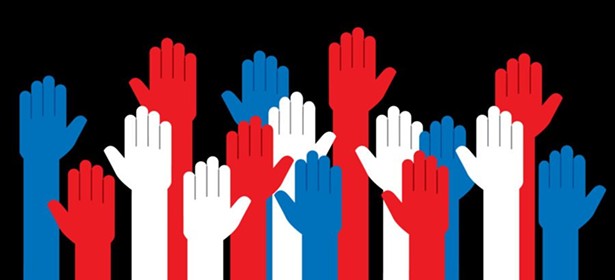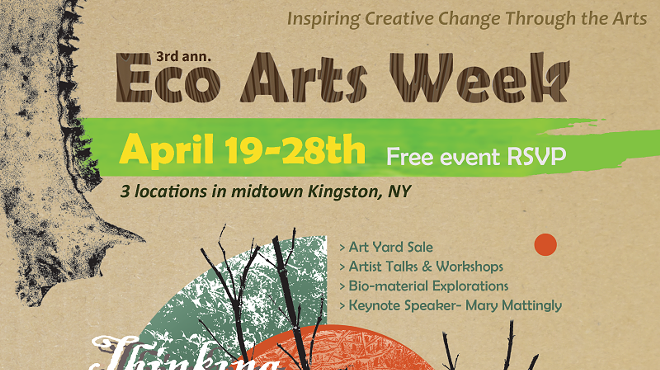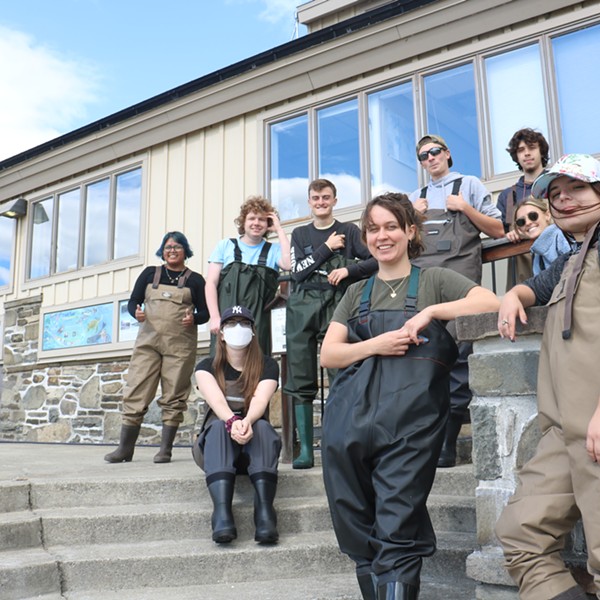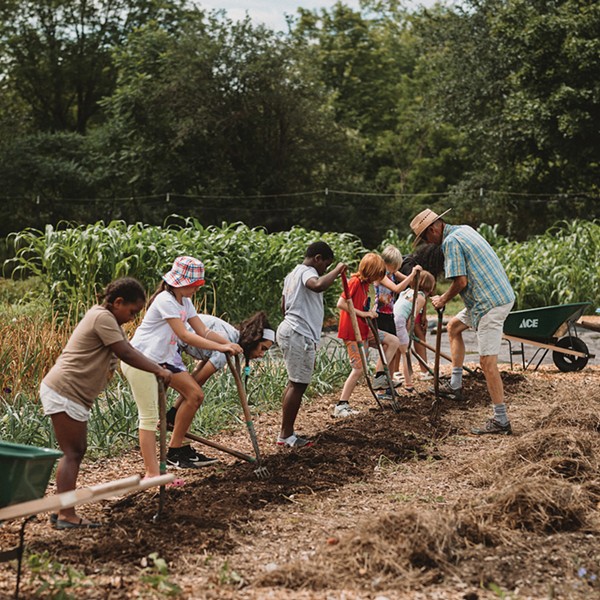There are many reasons to reopen a conversation about the importance of civic learning, but the violent siege of the Capitol on January 6 made it clear that some citizens lack a basic understanding of government, its functions, and the rights and responsibilities of citizenship. The idea that we need better civic education is not new, but the uprising, combined with a rocky presidential transition, has made it more urgent than ever.
Asma Abbas, a professor of politics at Bard College at Simon's Rock in Great Barrington, defines civics education this way: "Educating people in critical citizenship, and to inculcate democratic norms in a such a deep way that they actually allow us to challenge the conventional premises, obligations, and limits of citizenship." How does her working definition translate to what students across the country are taking away from civics education?
Michael Rebell, professor of law and education at Teachers College, Columbia University, is the author of Flunking Democracy: Schools, Courts, and Civic Participation (University of Chicago Press, 2018), which makes the case that America's schools have systematically failed to prepare students to be capable citizens for generations. Rebell notes that some things have changed since he wrote the book, namely the critical importance of civics education has come to the fore. "A spate of commissions has begun to focus on these issues, more educators and civic groups are organizing to promote civic education throughout the country and more states have begun to make improvements in their civic education offerings, although as you know, they all have a long way to go," he says.
So, how do teachers feel about civics learning, and how are they changing their methods to match the needs of the time? I spoke to a few teachers from schools across the Hudson Valley to find out how they're approaching civics in the midst of a pandemic and political and social unrest.
"What we need to talk about right now, is what is government, why we have it, how it works, and then also recognize what it actually does for us and how it's related to us," says Jennifer Kenyon, who teaches at Hawthorne Valley Waldorf School in Ghent.
Stephen Miller, a teacher at Oakwood Friends School in Poughkeepsie, says civics needs to shift focus. "It's clear that in many ways we've broken society," he says. "But we also found that some institutions saved us from being more broken—so how can we strengthen them?"
Focusing on Engagement
Miller mentions Robert Putnam's Bowling Alone, which documents how civic and communal engagement for all Americans has significantly dropped off over the 20th century. "It's a negative feedback loop. As society becomes more plutocratic and oligarchic, it makes people feel disempowered, causing them to engage less, which means they have less power," he explains, adding that better civics learning can help bring that back.
For Miller, the issue is not that kids are uninterested in civics. "If anything, I think kids now are more civically aware and engaged than 20 years ago, when I began teaching," he says. Part of the problem is that not only is civics woefully ignored, but that even when it is focused on, local civics is overlooked. "And it's where real life is—the stuff that happens that changes the feeling of day-to-day life," Miller explains. Oakwood ensures children participate in their local communities. They're taken to demonstrations, and in years before the pandemic, visited local representative offices as well as Senate hearings in Washington, DC, to ask questions and talk to elected officials about their concerns.
"My current civic lessons are focused on what it means to be an anti-racist. To be an anti-racist, you can't be neutral! In fact, neutrality gives racism power." —Ellenbeth Kaiser-Shaffer, fifth grade teacher in Newburgh
tweet this
Abbas says teaching civics can be challenging right now. "It's doubly or trebly tricky to cultivate citizenship in a context when the citizen feels abandoned, as it feels like in this country right now," she says.
Focusing on community issues is crucial, and according to all the teachers I spoke with, an easy way to get more student participation. "A hundred years ago, John Dewey diagnosed the fact that if a school curriculum doesn't address the concerns of the community, students will check out," Miller says.
At the beginning of this year, Britni Caserta, a teacher at Kingston High School, asked her class to send her an email telling her one thing they would change about their community—in school or in the city of Kingston. "I ask them why, then I ask them who they would reach out to—whether it was the mayor, a council person, local activist, or teacher. And then we go through the steps in order to see that through and try to make it happen"
Increasing Media Literacy
Fostering engagement is difficult, but a more immediate challenge may be combatting misinformation. "The most immediate and important need at the moment is to require effective media literacy instruction in all middle and high schools," Rebell says.
Rebell, along with Jessica R. Wolff and Ann LoBue, from the Center for Educational Equity at Teachers College, Columbia University, recently wrote a report about this titled "Developing Digital Citizens." It includes explanations of media literacy and the systemic issues standing in its way. It also offers a framework of recommendations to help students become more media literate, including access to up-to-date technology and media literacy education training for all teachers.
Deirdre Branford and Caserta, both teachers at Kingston High School, have begun to highlight the importance of media literacy in their classes. Britni says, "We have spent a lot of time looking at the idea of fake news. What is fake news? Why does it get this title? And just kind of looking at different news sources and at perspective: What makes something reliable and for whom is it reliable?"
Ellenbeth Kaiser-Shaffer, a fifth grade teacher in the Newburgh Enlarged City School District, says that media literacy is especially important for younger students. "This critical life skill is important," she says. "But it's getting harder to teach in an era with so many platforms for misinformation."
According to Miller, misinformation is not a new hurdle—what's changed is how social media programs itself. "The algorithms are written so that more people see [misinformation]. This causes even more people to see them, and then those algorithms link them with other pieces of misinformation," he says.
Kenyon says one of the solutions here is for teachers to adapt to technology, like the News Literacy Project, which has a range of online resources, including online software, a weekly newsletter, and a podcast, to help educators teach news literacy. "I've shifted some of my focus over to media literacy. I use NLP and its Checkology Virtual Classroom, which helps students go through exercises online to try and evaluate all the information," she says.
Seeing Students Differently
One of the mistakes administrators, policymakers, and adults in general make, the teachers told me, is thinking children are inherently disinterested or too immature to be active participants in a community. "It's not that they don't care—they're often presented as apathetic or disconnected—what they don't know is how they can change things," Miller says. He explains that when policymakers meet with students, "They're very nice but amazingly patronizing. Many events start with 'the youth are the future,' partly saying: 'what you say now doesn't matter.'"
Miller thinks getting rid of age segregation in American communities is crucial to help encourage civic participation. Kids may not be able to vote, but he believes voting is just a tiny part of civic participation. It's essential, he tells me, for children to be involved in identifying societal issues and envisioning change. "It's important to get young people and older people together to talk about things of substance and share their perspectives. Older people have life experience, but it often blocks them from being able to think about what could be different. Kids are great at being able to think about—it's called the subjunctive—what could be instead of what is," he says.
This is not only true for high school students. "No one can call out unfair behavior better than a child, so it's crucial to have these civic conversations at the elementary level," Kaiser-Shaffer says.
"We need a push for support of elementary teachers to have these conversations," Branford adds.
Pushing Past Neutrality
"When I started teaching, we were taught that you need to be careful and not talk about politics," Caserta, who has been teaching for 11 years, tells me as we discuss new approaches to teaching civics. "I think that the culture is starting to shift, to see what the dangers of being neutral would mean to our students," she adds. Her approach is to look at systems through a social justice lens.
This is how Branford sees it too, and adds that with the data to back up the inequities becoming more pronounced over the 14 years she's been teaching, "It's more imperative now to have these discussions."
Miller thinks the idea of neutrality involves a conceptual mistake. "Civics is political," he says. "Politics is about the public negotiation of values, questions like fairness, equity, and what a good life looks like. This is different from being partisan."
"One of the tragedies of seeing civics as 'content-neutral,'" Abbas explains, "is that it allows people to see the government as a kind of manager or administrator of sorts, taking care of things we'd rather not be worried about."
Teachers have found that studying government functions and visiting federal buildings is not enough for proper civic education. "For example, the history of the Electoral College is disenfranchising a group of people. So, yes, we've had this system for over 200 years. There's something to be said for that. However, you also have to understand where it came from and why it came about," Branford adds.
Kenyon tries to support every angle in a discussion. But with some issues, there's no debate. She explains, "Any place where racism is occurring: in voter registrations, gerrymandering districts, anything working against racial equity is wrong and should be discussed."
Even with young children, Kaiser-Shaffer believes there should be no neutrality at this time. "My priority was to keep my personal beliefs out of the conversation," she says, but adds, "My current civic lessons are focused on what it means to be an anti-racist. To be an anti-racist, you can't be neutral! In fact, neutrality gives racism power."
Adjusting to Remote Learning
Another challenge to civics learning presented itself in March 2020, when COVID-19 forced schools across the state to move classes online. Caserta finds that kids in her Global 9 classes are more self-conscious online. So, even though current events would lend themselves to great civic conversations, it's hard to get a discussion going.
"In a general sense, there's this disconnection. As civics involves a kind of communal perspective, if you're not even seeing the community, it's much harder to engage students," Miller says.
Branford says there's also the added challenge of students being reluctant to participate if their opinions don't match those of their parents. "They may want to expand how they're thinking about things, but they feel confined because they're in their home, and what their parents say and watch and listen to and read contains them and their opinions," she says.
"Kids are great at being able to think about what could be instead of what is."—Stephen Miller, teacher, Oakwood Friends School
tweet this
Kenyon says hybrid systems are even more challenging because it's like balancing two different modes of teaching. With just remote learning, she says, there's a lot you can do with Zoom. "We're able to stay up-to-date in real-time, and we got Antonio Delgado to Zoom into the class to take questions about civil discourse, so that's been a positive," she says.
A New Way to Learn
As teachers find ways to combat misinformation and encourage engagement, conventional learning may have to take a backseat. "Conventional civics education usually begins with many of the key questions already answered, all the main problems already defined," Abbas tells me. "Some of these include the partiality toward nonviolence that assumes the law is always right and that the system allows us to correct it; the assumption that redress for grievances is already provided for in the system (what do we do when the system is what hurts people?); and that the way to keep us safe is to constantly define an enemy against which we must be safe." She believes students should instead work together to establish what is mutually important and find ways to make that a possibility.
"A positive change is that civic learning has become more inquiry-based than fact-based," Kaiser-Shaffer says, but points out that the difficulty with this is that students in public schools are still assessed on facts.
To Miller, this is one of the larger issues with civics instruction. "When it involves simply memorizing abstractions about how the government functions, it's not worth much. But to see how it can be critiqued and improved is inherently interesting." If he was designing a civics class, he tells me, it wouldn't start with facts; it would be built around how you would solve an issue.
Stay Positive
Despite all the challenges, teachers think bringing optimism into civic learning is essential. Kaiser-Shaffer believes that as an educator, specifically of young children, she has to feed hope. "It's imperative children feel empowered to have a voice, and most importantly to use that voice for the betterment of self and others," she says.
Staying optimistic may also be the best way to get more student engagement. "I think a lot of the way the big problems we're facing are presented, makes everything sound hopeless," says Miller. "Why would you bother engaging if it's too late?"
Abbas notes that believing there is a better possible future is vital for students of civics. "I understand and know things are terrible," she says, "but I don't want young people to feel like their job is to fix a broken system, without getting any time or chance to understand and envision differently, because they must also be asked and trusted to define and describe the problems anew."
A Way Forward
Private and independent schools already have some curriculum flexibility because they're free of state testing constraints. Branford says that even though there's still too much emphasis on testing in public schools, some things are moving in the right direction. "The Board of Regents is attempting to be cognizant of these changes as well and is allowing for more flexibility of students to inject some of their own experience, for instance, in their essays. And so that's helpful as well in trying to show them that there's not just one way of thinking about something," she says.
Of course, schools still need more resources and training so teachers can help students build better communities. As Kaiser-Shaffer says, "We need to put our money where our mouth is. This is most important—let's put the training and development into better civics education."
"Now is a great time to strike because it feels like government issues are critical to a lot of people," Kenyon says, adding, "maybe one of the upsides of this crazy mess of misinformation is it's all in everyone's face."

















